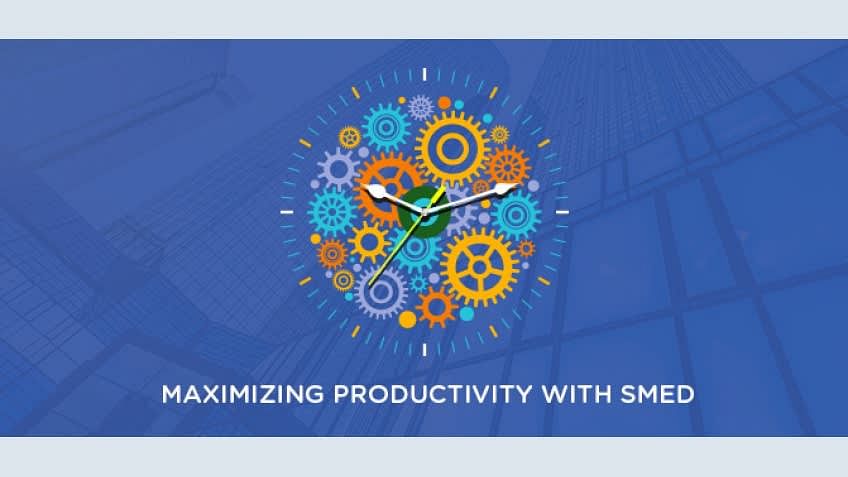What is SMED?
SMED is a series of techniques to cut the time it takes to complete changeovers by as much as 94%. SMED techniques may be applied to both front office environments as well as shop-floors.
In life, you may often have encountered the problem of having to wait a long time between finishing and delivering one product and initiating the development process of another. This changeover time between processes is an issue even in home environments, such as when cooking meat and vegetables when cooking - you can’t mix knives or plates.
I also hate when I try to pay at the cashier and they run out of paper at that exact moment, meaning I have to wait several minutes to get a print receipt. So why keep losing time with long changeovers when you can implement SMED?
Changeover is a concept pioneered by Shigeo Shingo (Toyota), and experience shows that it can be dramatically reduced as much as 94% with SMED.
It is one of the many lean production methods for reducing waste in a manufacturing process. It provides a rapid and efficient way of converting, for example in a manufacturing process, the assembly line or equipment from churning out the current product to running the next product. This rapid changeover is key to reduced production lot sizes and improved workflow.
SMED stands for Single Minute Exchange of Dies, which does not mean that all changeovers and startups should take only one minute, but that they should take less than 10 minutes.
Shingeo Shingo realized that Toyota (as well as all the car manufacturers in the 60s) had a serious bottleneck at the car body molding stage. The long time lost drove up the total cost of the car, so they tried to have big lots of cars to reduce the time lost, but on the flipside, this contributed to high storage costs.
Toyota found that the most difficult parts to change were the dies. The most famous improvement was an instance in which a process that took 2 weeks in 1969 took less than three minutes to complete 6 months later!
Some of Toyota’s innovations were to place devices to help employees be more precise with heavy instruments, scheduling the die changes in a standard sequence, dedicating tools to the die-change process so that all the tools required were nearby, and cheduling use of the overhead cranes so that the new die would be waiting as the old die was removed. This way, Toyota cut the change-over time to less than 10 minutes per die, thereby reducing the economic lot size to below one vehicle.
Why Would You Need Quick Change Overs?
1. To maximize production
2. To quicken pitstops turnaround to win the race in NASCAR/F1
3. Minimize your customer’s interruption in service phone, or cable.
Parkinson’s Law states that work will expand to fill the time given for it to be executed, so you need to add a sense of urgency to get the work done. Implementing this law will ensure your overall project stays on track and keeps to the schedule even if some stages stretch, which is the essence of SMED.
Contrary to what you may think, SMED is not just for shop-floor activities. “We don’t use dies here so SMED is not needed.” As a concept, it is just as relevant in the front office as it is on the shop floor.
The aim is to reduce the time it takes to switch from the last “good” part of product A to the next “good” part of product B in less than 10 minutes.
How to Implement SMED?
There are four main concepts that should be considered to SMED your process.
1. Separate internal and external activities: Which steps require downtime and which ones do not? Think of what you need to do when your printer needs the ink changed. Try to convert as many internal steps (which need to be performed during the downtime) to external stages (with no dependency - to be done before or after the downtime) to minimize downtime. Ensure that external setup actions are performed while the machine is still running.
2. Cut waste: Eliminate or reduce the 8 wastes and non-value addition operations. Reduce the quantum and frequency of changes required (by trial and error). Create indicators to identify which position is correct. Remember that defects and re-recycle is one of the 8 wastes. You can also use portable tools or replacement pieces so as to reduce transportation and waiting time.
3. Parallel changeovers: Many hands make light work -so long as the shutdown time is not costing you more than the production time. Look at the speed of a pit crew changing four tires in F1. Standardization in parts, schedules, and standard procedures will ensure everybody knows what to do, when to do it, and how. By monitoring the process, you will be able to identify shutdown constraints, or sequences of steps that don’t make sense and can be done in parallel.
4. Adding power to your change-over: Do this last so you are not making external activities quicker in the shutdown. For example, a vacuum is always faster than a broom.
If you need more information on the SMED method, check out Simplilearn’s Lean Six Sigma Green Belt certification course here.
